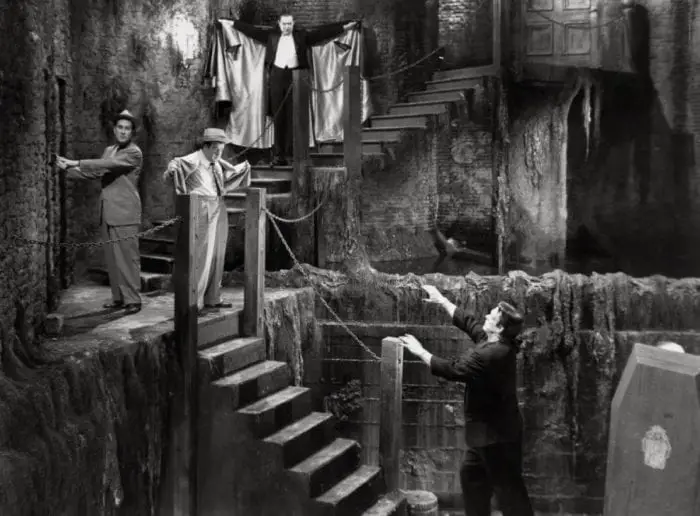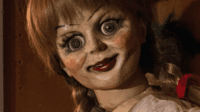Shared cinematic universes have been all the rage for about the last decade or so. The Marvel Cinematic Universe (MCU) completely changed the game, and the movie world has become obsessed with its model. Other studios now want to create their own universes to mimic the success of the MCU, and many fans want their favorite films to connect to one another just like the Marvel movies do.
But Marvel didn’t invent this idea. They weren’t the first ones to combine previously stand-alone characters into a larger, integrated world. Back in the 1940s, Universal did this exact same thing with their three most popular monsters. They combined their Frankenstein, Dracula, and Wolf Man franchises into a single shared universe more than half a century before Marvel Studios ever existed.
Or did they? That’s the story you normally hear, but it’s not entirely accurate. Yes, Universal did put those three monsters in a few movies together, and yes, those films were definitely precursors to modern cinematic universes. But the Universal Monsters Universe wasn’t quite the same thing as the MCU. Those old monster movies differ from today’s shared universes in some key ways that are usually just smoothed over and ignored.
However, if we really want to understand the history of shared universes, we have to see the whole picture. We have to give those differences the full weight they deserve, and to help do that, I’ve picked out four important ways the Universal Monsters Universe is unlike its modern counterparts. Once we recognize these key differences, we’ll get a much better understanding of how exactly these classic films paved the way for the shared universe model that’s so popular today.
1) The Universal Monsters Didn’t Begin as a Shared Universe

When Universal made Dracula, Frankenstein, and The Wolf Man, they didn’t originally intend for these movies to connect with one another. There were absolutely no links between them, and their sequels continued in this same vein as well. They remained entirely standalone series until Universal decided to combine them more than ten years after the Dracula and Frankenstein franchises began.
This stands in stark contrast with today’s cinematic universes. For example, both the MCU and the DC Extended Universe (DCEU) explicitly connected their first and second movies, and the first Annabelle was very obviously a spin-off from The Conjuring. These modern universes didn’t begin as completely separate franchises that the studio decided to combine a decade later. No, they were integrated right from the beginning, so they’re built very differently from the Universal Monsters Universe.
2) Universal Didn’t Interweave Solo and Team-Up Movies

One of the coolest things about the MCU is that its heroes move back and forth between solo and team-up movies, and they do it pretty seamlessly. Take Captain America, for example. He’s appeared in all four Avengers films, but he’s also had his own standalone adventures in between those movies. He has a single, complex character arc that weaves back and forth between his own little corner of the MCU and the larger team-up stories, and the same is true of just about every other major character in this world.
But the Universal Monsters Universe was nothing like that. Once Universal decided to put its three big monsters in a few movies together, they never made solo Dracula, Frankenstein, or Wolf Man films again. They simply made a handful of team-up movies after creating these monsters’ solo franchises, and that’s very different from the complicated, interweaving structure that Marvel has built (and that many of its imitators are working toward).
3) Monsters Didn’t Show up in Other Characters’ Solo Movies

This is similar to the previous point, but it’s not quite the same. Not only do modern shared universes use their characters in both team-up movies and solo adventures, but they also insert them into other characters’ movies. To take just two examples, Captain America: Civil War features pretty much the entire Marvel roster, and Ed and Lorraine Warren play a role in Annabelle Comes Home.
Again, this is light years away from what Universal did with its monster movies. Like I said before, there wasn’t even a hint of a shared universe before the studio decided to create some monster mashups, so you never saw Dracula appearing in a Frankenstein movie or the Wolf Man appearing in a Dracula movie. No, these characters’ solo franchises were completely isolated from one another, giving us yet another crucial difference between the Universal Monsters Universe and today’s cinematic universes.
4) Universal Didn’t Create a Cohesive Continuity

If you go through any long-standing movie franchise or universe with a fine-toothed comb, you’re bound to find a few continuity errors. It’s impossible to keep every little detail straight in every single film, but on the whole, today’s shared universes maintain very cohesive, believable continuities that fans can follow from film to film. For instance, Thor loses an eye in Thor: Ragnarok, so he has to get a prosthetic in Avengers: Infinity War. Likewise, the destruction caused in the third act of Man of Steel is the catalyst for the bad blood between DC’s most popular superheroes in Batman v Superman.
But when you turn to the Universal Monsters Universe, continuity often goes out the window. Take the two “house” movies, for example. In House of Frankenstein, both Dracula and the Wolf Man die, but then they show up again in the very next film, House of Dracula, with absolutely no explanation. Even more egregious, Abbot and Costello Meet Frankenstein has no real narrative links to the movies that came before it. Other than simply having the same characters, it doesn’t try to connect to the rest of the universe in any way, so it’s not clear whether it’s even part of that continuity. It’s almost like Universal wasn’t trying to create a cohesive universe the way studios do today. Instead, you get the impression that when they teamed up their heavy hitters, they were simply making more or less standalone films that had just enough connective tissue to their previous movies to entice fans to continue watching them.
A Proto-Shared Universe
When we put all these differences together, it’s clear that Universal wasn’t trying to do the same thing that modern movie universes like the MCU, the DCEU, and the Conjuring Universe do. They weren’t trying to create a cohesive, believable world where characters sometimes interact with one another and sometimes have their own adventures. They just made a few team-up movies after their big solo franchises began to run dry, so calling the Universal Monsters Universe the first shared cinematic universe is an oversimplification.
Sure, Universal introduced the idea of teaming up solo characters and combining franchises, so this collection of movies was definitely a precursor to the Marvel model, but that’s all it was. It was a precursor to shared universes, but it wasn’t really one itself. At best, we can call it a proto-shared universe, but the world had to wait several decades longer to see the first true shared cinematic universe.



